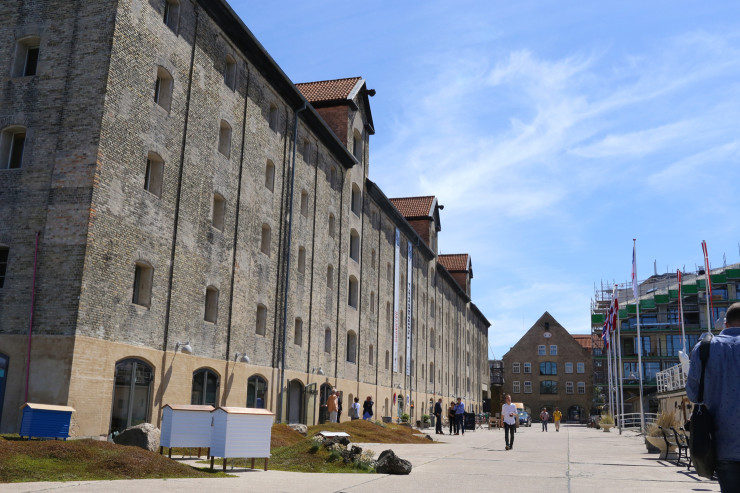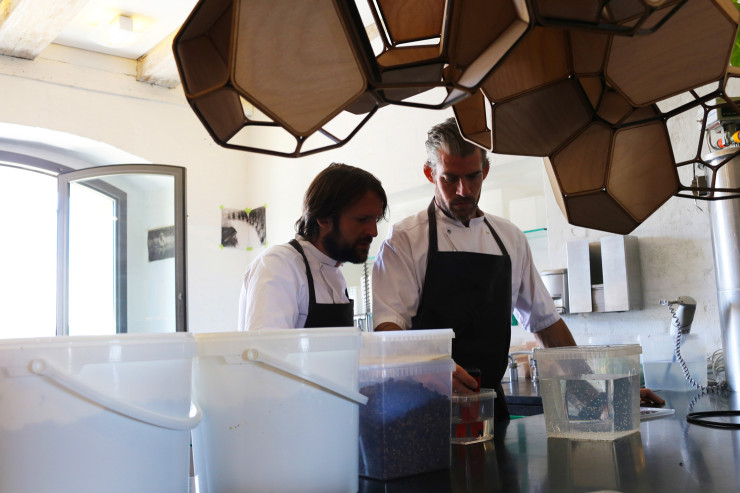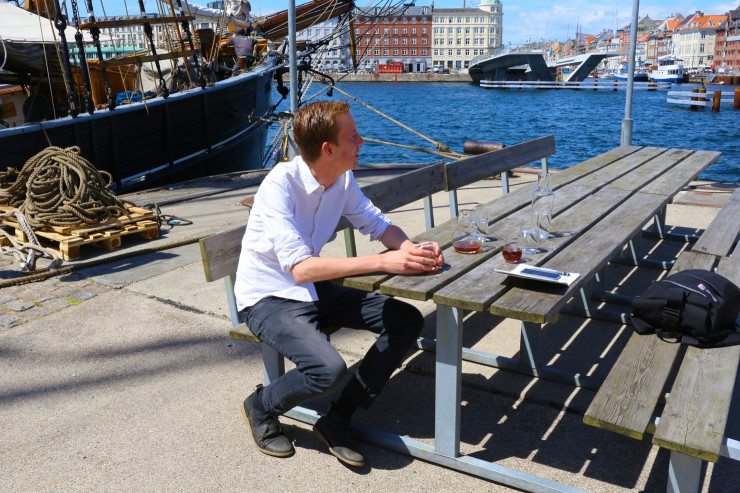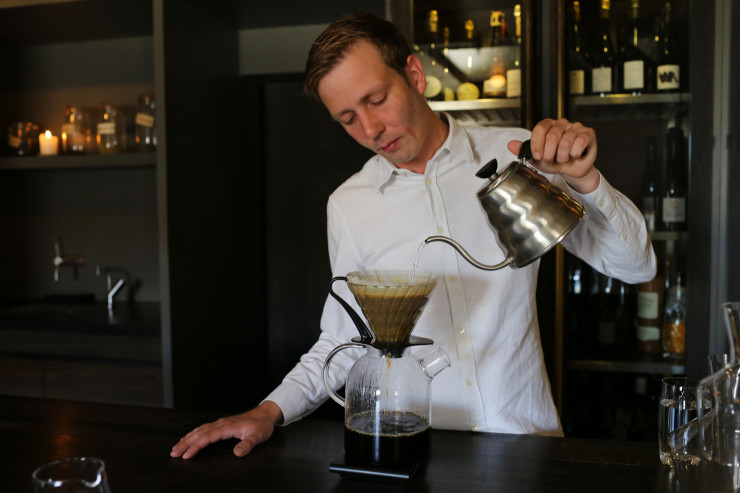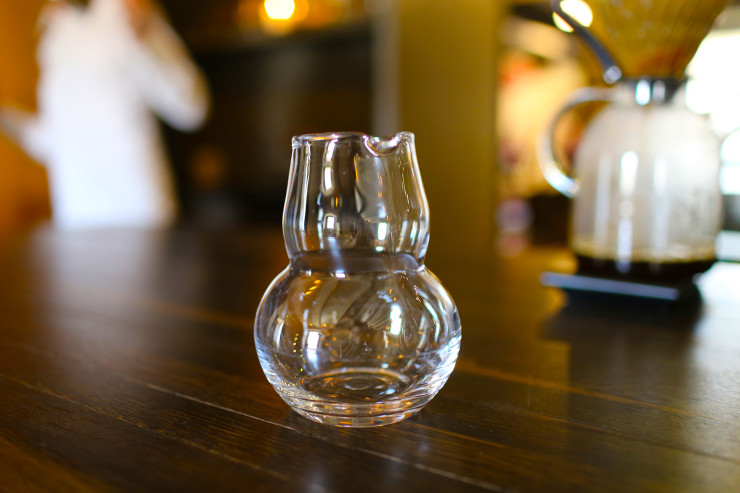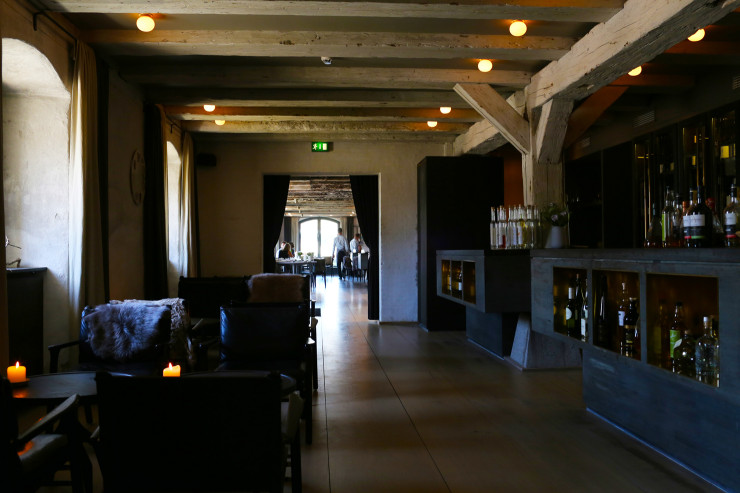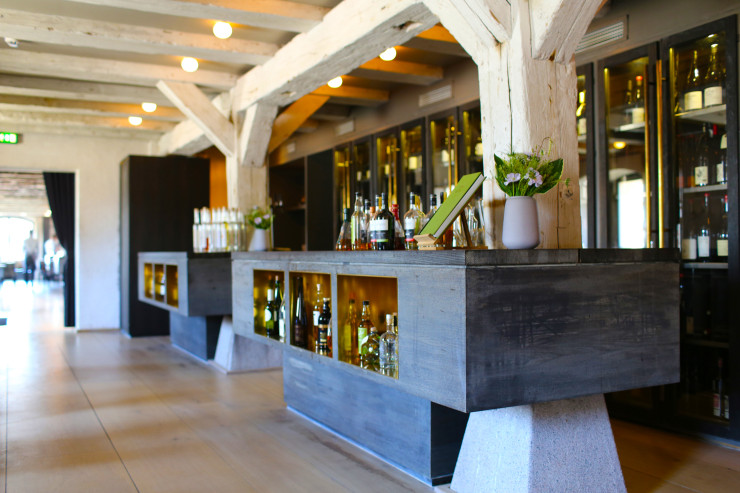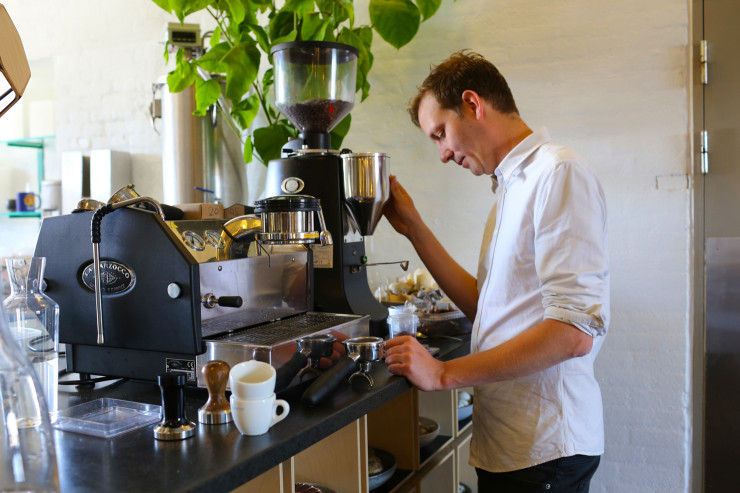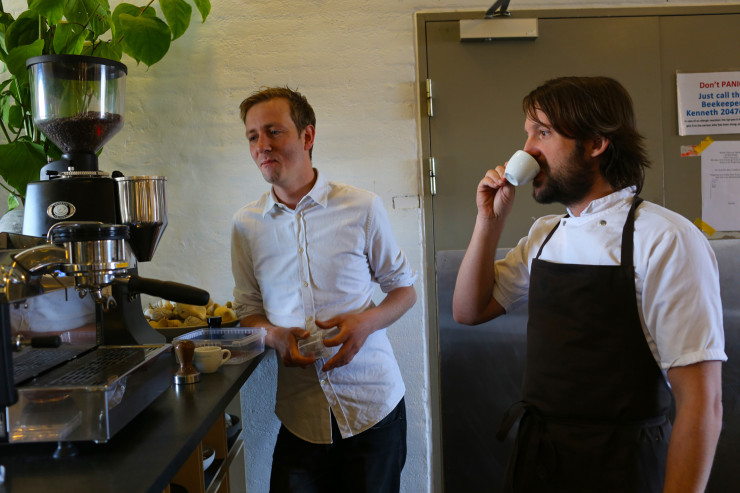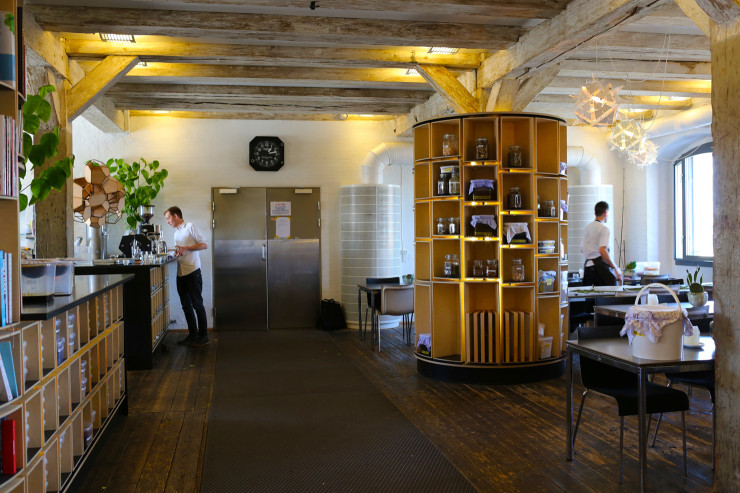On a sunny day last June, during the spectacular Scandinavian summer, I found myself riding a bike through the center of Copenhagen towards Noma, a restaurant with two Michelin stars that is frequently ranked among the world’s best. I had the privilege of holding an appointment in Noma’s test kitchen with renowned chef René Redzepi and Mads Kleppe, Noma’s head sommelier.
I ended up standing in such a glorious kitchen, surrounded by some of the best culinary and wine minds in the world, not because of the food, or the wine and spirits, but rather, somehow, because of coffee. This is because like the food, like the wine, the coffee service at Noma is among the very best of any restaurant in the world. It felt almost absurd; this was an appointment any food or wine journalist would consider themselves lucky to have. I was there for the coffee.
In March of 2013, Noma transitioned from serving local Copenhagen roaster Estate Coffee to a range of coffees from Tim Wendelboe, a coffee roaster and cafe based in Oslo. Like Noma, Tim Wendelboe is widely considered at the forefront of its field, combining a thorough dedication to quality with a direct line to some of the world’s very best coffee, through Mr. Wendelboe’s Nordic Approach green coffee importing company, co-owned by Wendelboe and veteran green coffee buyer Morten Wennersgaard. Coffee has no Michelin star equivalent (yet), but if it did, Tim Wendelboe would surely be listed. Its place on Noma’s menu, in the hands of Mads Kleppe, is the result of a promise that René Redzepi made at the 2012 Nordic Barista Cup, an annual gathering of global coffee professionals that is now sadly defunct. By 2013, Redzepi promised, Noma would have “…the best coffee of any restaurant in the world.”
Mads Kleppe spoke to me from from a park bench near the restaurant, explaining that the process behind redesigning the coffee service at Noma actually began four years ago, when Kleppe joined the team. “I initially wanted to change the coffee as soon as I could, but I had a lot of things that I also needed to pay attention to and I also needed to learn how to work here,” Kleppe told me. When he finally got his head around changing the coffee service, it took a leap of faith: “My experience is that it’s easier to ask for forgiveness than permission, so I had had some talks with Tim [Wendelboe] quite early on, then later when René and I talked and agreed that we wanted to do something different with coffee, we got Tim in.”
The process behind implementing their new coffee program was far more complicated than they originally anticipated, taking eight months until it was ready for service at Noma’s exacting level of execution. In this time, the team installed a reverse osmosis system solely for the filtration of water for coffee service (ripping up the floor in the process), as well as development of their service model with Tim Wendelboe, and comprehensive training for their staff.
Once they started to work together, the team–Redzepi, Kleppe, and Wendelboe–decided that pour-over coffee would be the best expression of the sort of coffee they wanted to serve: something beautifully light, refreshing, fruity, and complex. This dovetails with (or perhaps has helped lead the way towards) a wider line of thinking right now when composing coffee service at some of the world’s best restaurants. Espresso, with its technical demands and propensity to be better with volume, is perhaps best suited for cafes and coffee bars. Filter coffee–replicable, delicate, and complementary to food–is a better fit for fine restaurants. This gets away from the existing orthodoxy that demands an espresso at the end of a meal, and towards a new approach.
It was not an undertaking to be taken lightly. As René Redzepi put it simply to me, “We had to hire an extra staff member to do this coffee, so it’s a big deal for us. It took a lot of time, a lot of effort, a lot of money… like, insane.” Noma even went as far as to commission a line of custom glassware from Danish glass artist Nina Nørgaard, working with the artist to create vessels that would best represent their preferred style of filter coffee (an approach not far removed from designing glassware for wine). The end product looks quite delicate, but has a sturdy and comforting feel when held. The sensory elements of aroma and flavour perception were strongly considered, all with the goal of best highlighting the unique characteristics of light, fruity, impeccably prepared coffee.
The reaction to the coffee service from patrons and the wider community has been largely positive, but not universally so. The team at Noma has been quite surprised at some of the reactions to a simple, delicate cup of filter coffee at the end of a meal. This phenomenon was candidly discussed by Redzepi at his follow-up 2013 Nordic Barista Cup talk, titled simply, “Milk and Sugar, Please!”
Mads Kleppe elaborated: “It’s incredible how much you fuck with people when you change what their perception of coffee is. Most of the people who come here are quite open-minded, but coffee is something that everybody has an opinion about. Luckily most people really enjoy it, but a lot of people get really provoked and upset because this is not how coffee tastes for them, it’s not how it looks and smells, and they have very strong ideas about how it should be.”
These negative reactions seem especially bizarre in the wider context of the food served at Noma. Diners will gladly accept some very confrontational food (wood ants on beef tartare, for example?), but deviations from the coffee norm, as with wine, occasionally draw derision and speak to how deeply ingrained beverage habits are, even at the very forefront of progressive dining. I suppose it’s a semi-logical line of criticism; while restaurant food has evolved significantly over the years, the way that the average person would brew coffee at home has not (for the most part).
“I was really surprised and fascinated by how strong a cultural drink it is,” Kleppe told me. As a result, people are far less flexible with confrontational changes to their expected cup of coffee. “But then when I thought about it, of course, it’s a thing that exists in most cultures around the world and has for a long time. It’s different wherever you travel and people have grown up with it, so of course they have strong feelings and opinions about it.”
As with anything, it’s best to learn the rules before you break them. With food at Noma, they’ve taken the time to learn the origins, meet the producers, and know that process from start to finish. Coffee is still a relatively new area of focus for them (as it is for many in the restaurant and wider specialty coffee industry). It takes time to learn coffee’s heritage and providence before being able to innovate in an educated way.
Currently, the team is working on brewing espresso coffee in their test kitchen, with the goal of eventually serving it permanently in the restaurant. This next step in service is being piloted as we speak (with Tim Wendelboe at the helm) in advance of the upcoming MAD symposium, founded by Redzepi in 2011.
Just don’t expect short, dark shots. As Kleppe explained, espresso service at Noma still won’t be what a lot of people expect. “I love espresso, and we are going to do that, but it’s going to be a very different espresso,” he told me. “The people that want to have a strong espresso at the end of the meal are still going to be angry at us. It’s going to be light and fruity and acidic and delicious, and it’s not going to be served as hot as they want, but it’s still going to be great.”
But these are all technical details. The style in which an ingredient is presented is never more precious than the ingredient itself. For Noma, the future possibilities for innovation in their coffee program don’t necessarily lie in the brew bar, but rather in the soil, the cherries, the processes, and the people that these coffees are coming from in the first place. Mads Kleppe has plans to travel extensively in the coming year with Tim Wendelboe and Nordic Approach to their coffee projects in Latin America and Ethiopia. Ever the trained sommelier, Kleppe echoed this desire to visit origin as being part and parcel of his understanding of wine: “I really want to meet farmers, because for me it’s very important to know the people. The people are where everything starts and ends, and it’s the same with wine. More or less, all the wine that we serve here on a daily basis is from people that I’ve met and visited. For me it’s a very important element of what we do and I intend to do the same with coffee–I want to meet the people and see the places where they grow it, and really understand more about what they do, what they don’t do, and why.”
During our conversation, Mads outlined some of his goals for eventually having an input into the sourcing of Noma’s coffee, including a desire to find more organically grown native & heirloom coffee varieties like those in Ethiopia. This again echoes a similar approach to how Noma select their wine and food. It is an effort to focus on the natural strengths and qualities of any given ingredient or piece of meat or produce, and to best highlight the essential qualities of these ingredients.
Regardless of all the mixed opinions, fanfare and criticisms, this continued dedication to coffee service at Noma should be cause for celebration among discerning coffee lovers worldwide. Here’s a chef and a sommelier–Redzepi and Kleppe, among the most revered in their respective fields–putting money where their mouths are and making a defining set of statements about the importance of coffee in their larder. There’s still so much more work to be done in understanding and appreciating specialty coffee; who wouldn’t want some of the best food and wine minds in the world applying their knowledge and skill to such a young and thriving industry?
As Kleppe so eloquently put it, as the kitchen geared up around us for that evening’s service, “I always feel that we’re in the starting phase of this restaurant, but when I think about coffee, it’s barely an infant. It’s completely newborn. I’m so excited to be in a part of this world at this time working with coffee, because there are endless possibilities.
“It’s so exciting,” he told me, and in the moment his words felt genuine, considered, and hard-earned. “There’s so much potential, and it’s going to be a lot of fun.”
Eileen P. Kenny is a Sprudge.com staff writer based in Melbourne. Read more Eileen P. Kenny on Sprudge.


